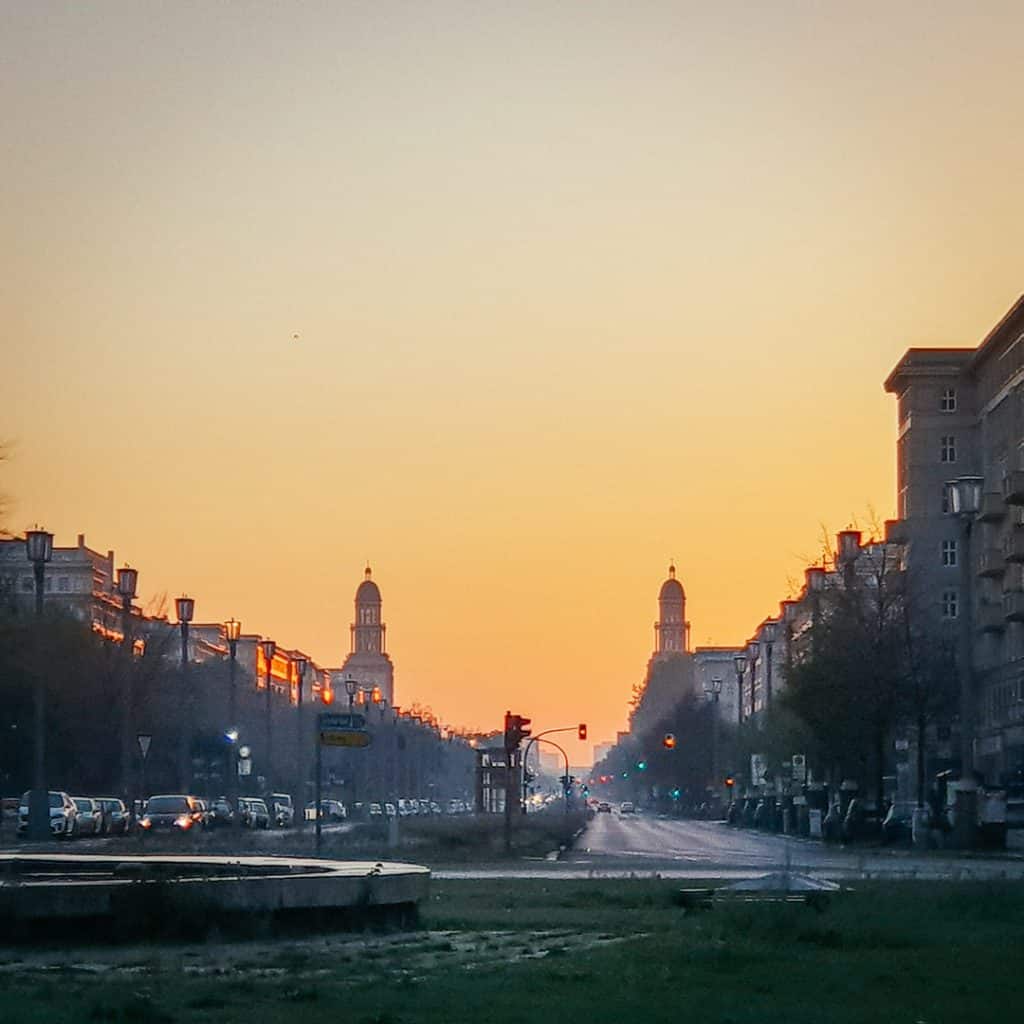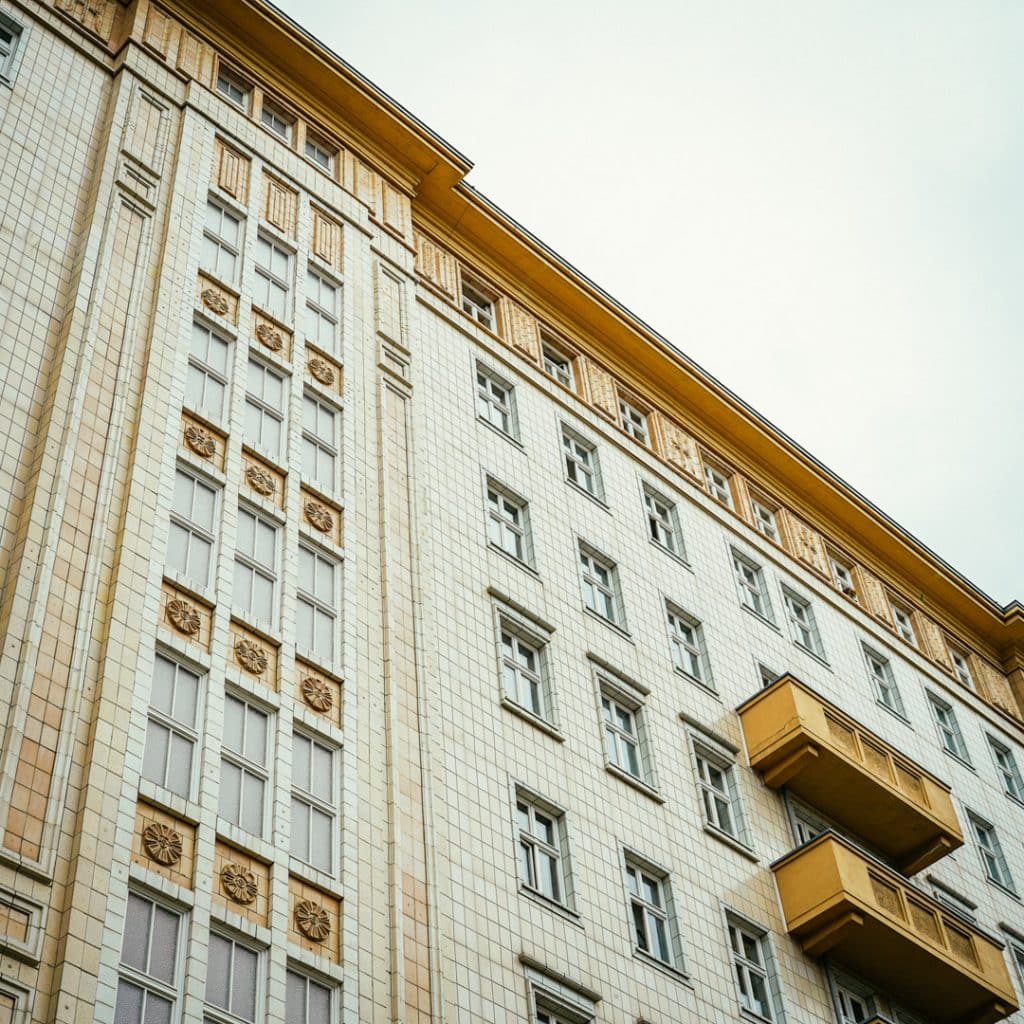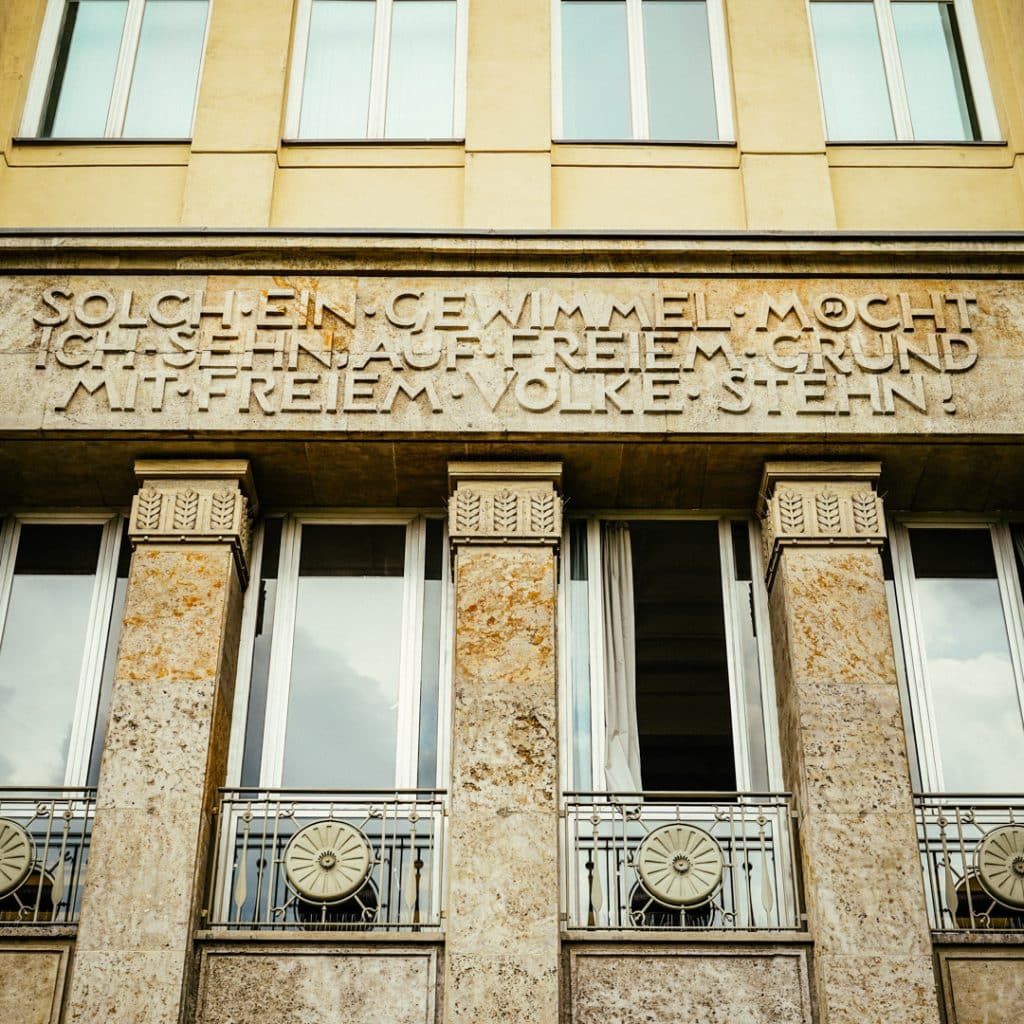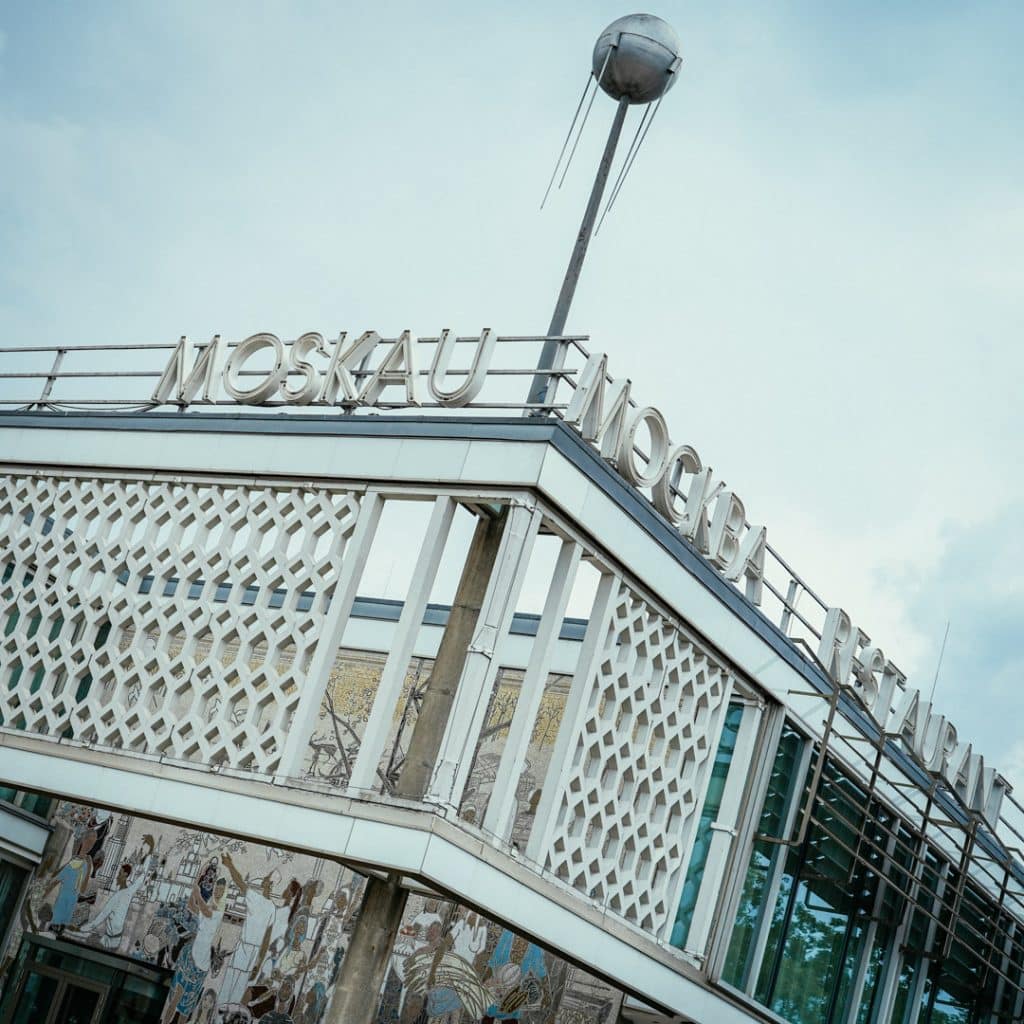


In 1961, a 4.8m high bronze statue of Joseph Stalin, introduced here ten years earlier, was torn down as the street was renamed Karl-Marx-Allee. A remnant of this statue can still be found in Cafe Sybille (near the Karl Marx book shop), on display inside - Stalin's ear.


Some useful links related to the Brandenburg Gate: